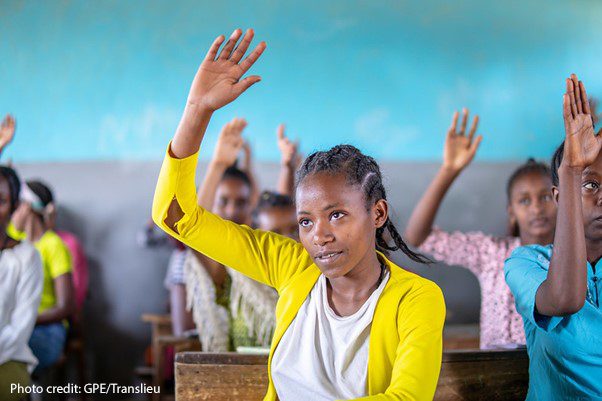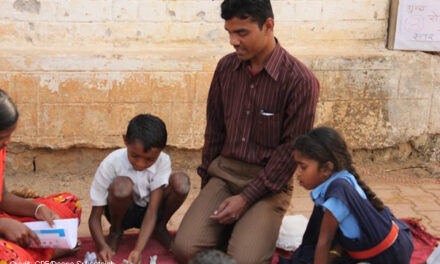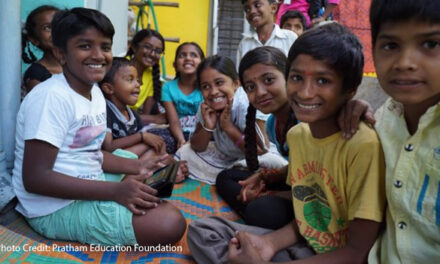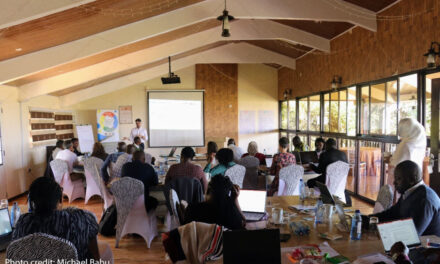This blog was written by Obiageri Bridget Azubuike and Rhiannon Moore, Doctoral researchers, University of Bristol.
There is a growing demand for English language skills in many lower-and middle-income countries (LMICs); as a result, many governments have put in place policies to improve students’ learning of English language. Our recent study, published in Social Science and Humanity Open employed Bourdieu’s theory of cultural reproduction to examine some of the factors which explain the process of English language learning in three LMICs : Ethiopia, India and Vietnam.
The relevance of this approach relates to an understanding of English language proficiency as valuable cultural capital, influenced by learners’ social and cultural backgrounds. Bourdieu’s theory of cultural reproduction suggests that a child’s educational outcomes are influenced by the cultural capital inherited from their family, encompassing economic, social, cultural, and symbolic aspects. Home background factors, such as wealth, parental education, and household resources, play a crucial role in shaping their educational outcomes.
We employed three-level multilevel modelling of the Young Lives international school survey data to investigate the extent to which variables at the individual, classroom and school levels influence the English language skills of students in the three countries. In our paper, we measure students’ language skills using scores from functional English language tests (defined as the ability to communicate effectively in real-life contexts) administered at the beginning and end of the school year (Wave 1 and Wave 2 of data collection respectively).
Our paper addresses three research questions with the objective of unravelling how home background and school-level factors contribute to students’ English language skills. Our findings contribute to the broader discourse on education equity and have implications for education policies relating to English language skills development in LMICs. In this blog, we focus on one of our research questions which asks: To what extent is the student English test performance a function of schooling factors or individual level factors? Does this vary by country? We summarise the key findings and conclude with some broader recommendations from our study.
There is a lot of variation between schools in these three countries
The importance of schools in understanding students’ English test performance is evident in all three countries. Our study reveals that a large portion of the variation in end-of-year test scores can be attributed to the school level. In Ethiopia and India, just under half of the variation in student outcomes (46% and 47% respectively) is found at the school level, highlighting the need to consider factors at this level when analysing differences in English language performance. In Vietnam, we found less between-school variation (34%), however this still indicates a notable influence of schools on student performance.
When we move to a “value-added” model which controls for students’ prior test scores, the between-school variation decreases significantly in both Ethiopia and India. This suggests that initial differences in school performance can be largely attributed to disparities in student intake rather than inherent school quality. A similar trend is observed in Vietnam, although again to a lesser extent. This finding emphasises the importance of considering student intake when explaining between-school variation in all three countries.
Students’ individual and home background characteristics strongly predict their English language skills
Students’ prior test scores in English are positively associated with end-of-year outcomes in all three countries, as 1 additional point of learning at Wave 1 equals around 0.5 additional points of learning at Wave 2. Prior attainment in mathematics also positively affects English performance. In India and Ethiopia, older students had lower English outcomes, while belonging to disadvantaged caste groups is negatively associated with English scores in India. Being female is associated with a significant positive effect in English performance in Vietnam and in India.
Wealthier students in Ethiopia and India have higher scores and make more progress over the year, indicating the likelihood of widening gaps in attainment over time. Interestingly, this trend of widening gaps is not observed in Vietnam, suggesting an education system which is potentially more equalising, a finding consistent with previous studies conducted in earlier grades within the same context. Possible indicators of cultural capital, such as the number of books at home, mothers’ literacy (in India), and home language (in Ethiopia and Vietnam) are also found to influence English language progress, as are exposure to English outside school through conversing with siblings or parents and engaging with English media.
School-level factors are particularly important in Ethiopia and India
School-level factors play a crucial role in understanding English learning outcomes in Ethiopia and India in particular. In India, urban schools, English-medium schools, and private unaided schools are associated with higher English scores and greater progress compared to rural schools, government schools, and non-English medium schools. Additionally, a positive peer effect is observed, where students in schools with higher mean English scores tend to achieve better results.
Meanwhile, in Ethiopia, school type and location are also significant factors. Rural government schools exhibit lower scores and less progress compared to other school types, while, somewhat surprisingly, schools classified as English medium do not show significantly better performance. The influence of peer effects is less pronounced in Ethiopia compared to India.
In contrast, Vietnamese schools demonstrate fewer influential school-level variables in English learning and progress, with the exception of the school mean English score which indicates the presence of a strong peer effect. School type and location do not significantly impact learning outcomes in Vietnam, contrary to findings in Ethiopia and India. This discrepancy is unexpected considering the higher prevalence of spoken English in urban areas, suggesting that perhaps schools in Vietnam may be acting in some way to equalise some of the underlying differences between students.
Conclusion
Our multilevel analysis reveals variation in the importance of school and individual factors in explaining English test performance in different contexts. In Ethiopia, school-level factors, particularly school location and type, account for most of the variation in student scores and progress; similarly, in India, school-level factors including type, location, and medium of instruction explain a significant portion of the variation. In contrast, in Vietnam, individual student factors outweigh both home background and school-level factors in explaining between-school variation in English skills.
These findings suggest that a more equitable educational landscape may exist in Vietnam, compared to Ethiopia and India. While students’ prior attainment is crucial for predicting English test scores in all three contexts, we find that schools in Vietnam do not worsen existing gaps, while in Ethiopia and India it appears that differences in school-level factors may reinforce societal stratification in English language skill development. The linguistic and social homogeneity of Vietnam may contribute to these findings.
Overall, our study aligns with Bourdieu’s theory of cultural reproduction, but the process of social capital reproduction through schooling appears to differ across the three countries. We suggest that these findings provide further evidence of the need for education policies to ensure a minimum quality standard in all schools, regardless of their location or management type. Such policies have the potential to equalise educational opportunities between students from different backgrounds; something which is particularly important given the extensive existing literature base on the association between learning gaps and children’s backgrounds in LMICs. While there is no universal solution to address inequalities faced by adolescents in these contexts, our analysis emphasises the need for policy interventions which support all groups in developing English language skills, which are increasingly seen as essential for social and economic advancement, employment, higher education, and future opportunities for social mobility.





